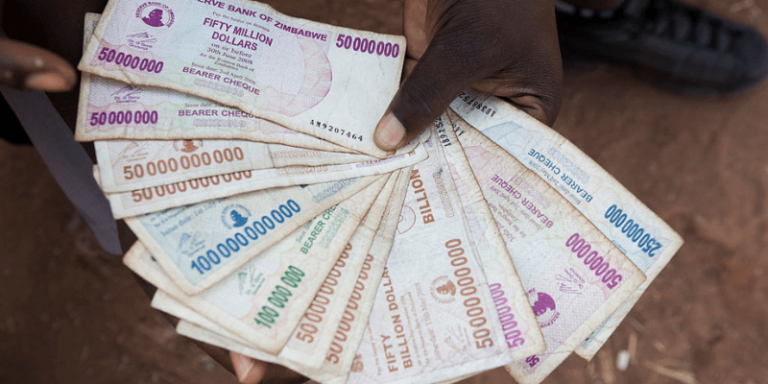Zimbabwe and Inflation: Can New Money Solve the Country’s Problems?
Zimbabwe stopped printing its own money because the currency was practically worthless.
By: Andrew Moran | November 20, 2019 | 350 Words

(Photo by Gideon Mendel/Corbis via Getty Images)
Ten years ago, Zimbabwe stopped printing its own money because the currency had lost its value. The situation was so bad that people carried wheelbarrows of Zimbabwe dollars to buy a loaf of bread. Now, for the first time since 2009, Zimbabwe is printing its own money again.
Inflation is a normal process seen in all countries – this is when prices rise over time. For example, a candy bar or comic book is more expensive today than it was 50 years ago. Because inflation happens over such a long period of time, people can get used to its effects. However, Zimbabwe was suffering from hyperinflation, a faster, out-of-control version of inflation. Money lost value so fast, prices doubled or even tripled in a day.
The Rebirth of the Zimbabwe Dollar
Consumers have been lining up outside of banks to get the new money, but experts are warning that the introduction of cash will reduce the value of these new dollars and raise prices. The country’s currency inflation is estimated at about 300%, the cost of a loaf of bread is seven times higher today than it was in January, and a meal is more expensive now than in 2009.
John Mangudya, the central bank chief, dismissed concerns. He said in a statement:
“There is a misconception that once you introduce a currency, then inflation is going to increase. We are simply giving people a chance to choose between electronic balances and cash.”
 Over the last ten years, residents in Zimbabwe have used the money of other countries such as the U.S. dollar and South African rand, and digital currency which could be traded through cell phones. This past summer, the central bank announced that it would be illegal to use money from other countries.
Over the last ten years, residents in Zimbabwe have used the money of other countries such as the U.S. dollar and South African rand, and digital currency which could be traded through cell phones. This past summer, the central bank announced that it would be illegal to use money from other countries.
In Harare We Trust?
A lot of conservatives and libertarians are concerned that the U.S. will experience hyperinflation one day. The story of Zimbabwe is a cautionary tale because it is a country in a recession and a currency crisis, created from failed central bank policy. Is this the future for today’s youth?















